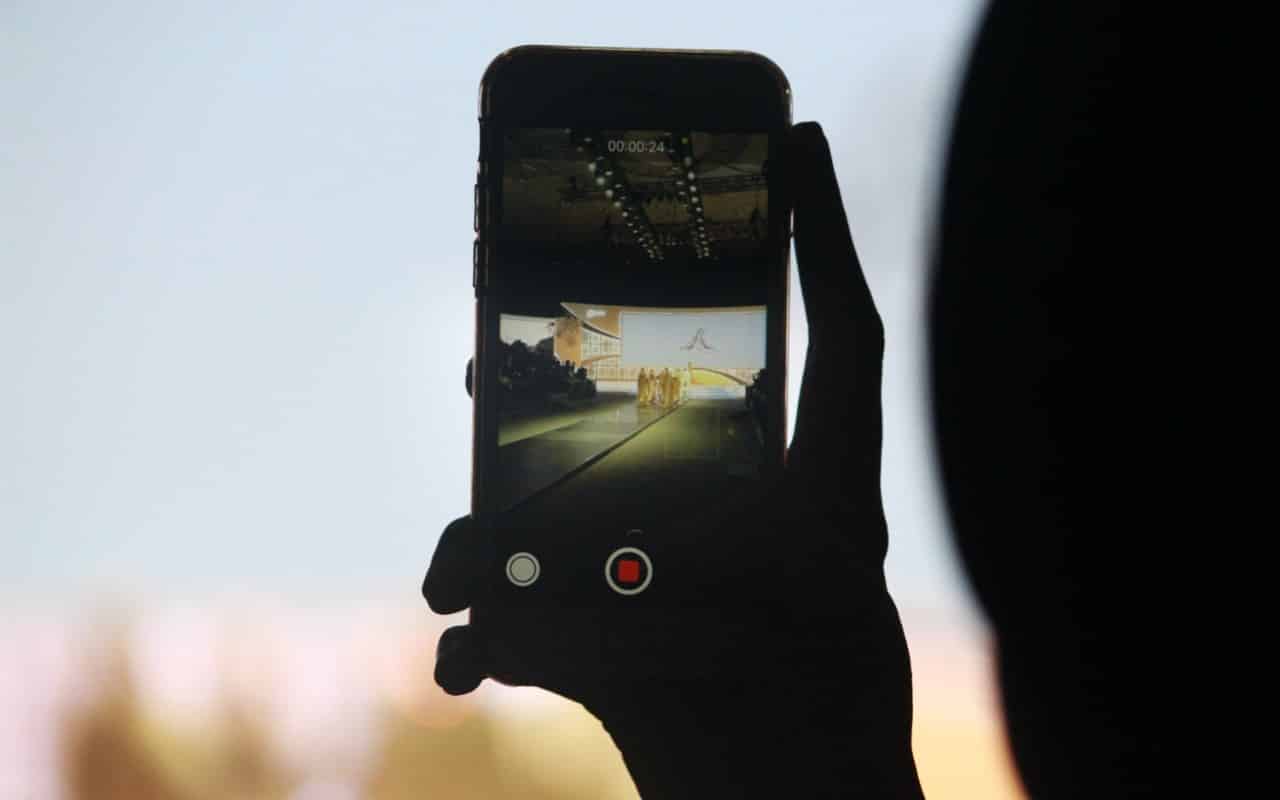Author, Rafael Guida
A 360 Flip
The marketing space has been very diverse from the start. You had traditional media – newspapers, broadcast news – that kept you abreast of current happenings. With time, media evolved to become more immersive. You had colour magazines, for example, that allowed you to start telling print narratives. Then came the TV.
The first TV ad wasn’t exactly all bells and whistles. It was an ad for a Bulova watch. In it, you’d see a map of the US, and the logo would appear at the centre of the map, reading ‘Bulova Watches’. Over the next 60 years, the medium evolved from black and white to high definition. The premise, however, remains the same. Developing narratives that make people do something.
Back then, it was about telling brand stories in short intervals of 30 to 90 seconds using videos. Every marketing module out there will tell you how to catch someone’s attention, evolve the narrative, and end with the brand name and message. It’s a formula that was perfected over the years.
Then, cinema and the internet happened. This allowed storytelling to go even deeper, and narratives to extend over a longer timeframe. With social media, things started changing very fast. Social media, in many ways, turned 60 years of formulaic marketing on its head. You’d now have to start with your brand and message, then earn each second of your audience’s attention. If you lose your audience for even a second, they’ll scroll up and it’s on to the next one.
All of this happened so fast that brands didn’t have the luxury of time to pivot. The whole industry needed to change the way they worked – from what clients wanted to the way agencies were equipped. And even a screen flip!
Just think about the early days of YouTube, and how people were watching videos on their desktops. An aspect ratio of 16:9 was totally fine. People who shot vertical videos were made fun of. But slowly, people started watching Youtube on their phones. Now, a 16:9 makes less sense, as a phone is a vertical screen. Even for a platform like Youtube that isn’t very old, it was hard to get content creators to transition to shooting vertically. Across the board, people had to shift habits to respond to social media.
Learning how to navigate this dynamic space is an ongoing process. It takes a great deal of expertise to master storytelling on cinema and TV, and go on to adapt that content to Facebook, Instagram, Youtube, and Twitter. While you cannot expect to master all there is to know about social media in a short amount of time, there are things you can do to get closer.
Starting with a Big Idea. Brands that are winning at social media are not trying to create formulas that adapt to new formats. It’s not about having a stellar media plan where you’re resizing all your content to fit on vertical screens, square videos, and a six-second version for Facebook. That’s just optimisation, and it only works in the short term.
“In the long run, ideas are your vehicle to success. Think about one big idea, and then work backwards to figure out how to bring this idea to life using the unique functionalities of each social media platform.”
So if your idea is to make an ad film, don’t think about how to cut and resize this film such that it fits everywhere. Instead, you’d just use the film as a starting point. Then, you’d ask how you can make use of the vertical video function that’s native to Instagram stories. Maybe you’d look at the same ad film from the point of view of a specific character for Instagram stories. Since the platform is largely for personal, raw content, you’d want the videos you upload to be more natural. You could even do behind-the-scenes style footage, or interview a celebrity with bloopers. So, when someone watches your ad film on TV, they see a finished version of your idea. On Instagram Stories, they’d get a totally different perspective. That’s where you’d make the connection as a brand: one story, with two unique angles.
Script writers and directors bring stories to life in cinema, while Kodak is just the medium. Similarly, social media is just that – platforms on which your brand’s stories can take centre stage. Admittedly, it’s a lot more challenging now. You can’t just approach an idea with one script. You’d probably need to put in a lot more work to come up with two or three different scripts. Production costs are also going to be higher when you’re shooting for different platforms at once. Still, for brands who take the plunge, they get a much better return on investment on their media spend.
Creating For Mobile
When planning a social media campaign, you have to start with a big idea but also have very clear goals about what you hope to achieve. Both the agency and the clients need to agree on these goals. Say the goal is to create an emotional campaign to build brand affinity and raise awareness about a product. You’d create a beautiful ad film that would make people cry if they watched until the end. But how do you retain their attention?
You could maybe create a shorter video trailer for Instagram Stories, where your audience can swipe up to watch the whole video on YouTube or Facebook Watch. They’d then be watching the video with intent, and would stay with the story till the big emotional reveal. You could also break that film into shorter chapters: instead of a one-minute long video, how about four 15 second videos instead? You’d reveal each clip every two days, and only target people who have watched the previous episodes.
However, if the client’s goal is to sell more of a specific product, then an emotional film isn’t going to suit the brief. Instead, you’d look at other mediums that are more suitable to achieving that goal. When creating for social media, know what the goal is and stay true to that goal. When you’ve settled on your goals, you can choose platforms and formats that will help you deliver your content effectively.
Stop Creating For Virality. The big misconception that still exists with brands is that their social media content needs to go viral in order for it to succeed. There needs to be a boom of organic reach, and people need to be liking, commenting, and sharing your content. This is not the case. You should think about social media as a paid media platform rather than an organic one, and create content accordingly.
When you watch an ad film on TV, you’ll see that the creators don’t really care if you like the video or talk to your colleagues about it the next day. They just want to push the message, and show you the benefits of using their product to get you to buy it. The advertiser’s goal was just to get you through the end of the video with good storytelling. Maybe they’ll tell you a funny or emotional story along the way, but it’s unrealistic to expect someone to watch something and immediately start talking about it with people. That goes against your audience’s behaviour. So why do we expect people to comment or share on social media?
Think about how you use social media. Suppose you see an ad that’s relevant to you for a product you’re interested in. You may not share it with all your friends, but you might buy that product instantly. Even if you don’t, you have awareness for that product and may end up buying it a few days or months down the line. That’s how brands should look at social media: the same way that they’d view a TV or print ad.
The next step is to add a layer of interactivity that gets people talking. You can think about using the technology that’s out there to create a fun experience for your audience. Now that Augmented Reality (AR) effects are trending, brands can create AR games that people can play and share with their friends. This user behaviour is native to the platform, so it feels natural. All these little moments of delight add up to be of value to your brand in the long term.
The Value Of Being Experimental. What big brands can learn from SMEs is the experimental mindset. SMEs are always trying out new ideas and testing more often. Think about the way a 100 year old brand would work. They’d crack the big idea, test it in small focus groups, and use their hefty budgets to bring that idea to life in the most beautiful way possible. They’d then make a square version of that ad for Facebook. If the campaign works, everyone is happy – the studies and research have paid off. If it doesn’t work, there’s nothing much they can do, except to take those learnings and apply it to their next campaign that will go through the same creative process.
SMEs don’t have the budgets for research and focus groups. They leverage on social media to provide the same value at a fraction of the price. They’ll create an ad that’s fairly simple. They might even use stock footage to keep production costs to a minimum. They’d then run that campaign, and test it. When they see that something is working, they’ll invest more money to make it bigger and better.
Now, a big brand will turn around and say “this is all great, but I don’t want to put anything that isn’t well-crafted and high quality out there because it will devalue my brand. People expect a certain standard from my brand.” This is a valid point, and a valid discussion to have.
But when you look at the numbers and you’ll see that small campaigns, when run in a nimble way and in a test-and-learn environment tend to get better results than traditional campaigns. I wouldn’t dismiss traditional campaigns altogether, but as a bigger brand, you could always apply some aspects of the test-and-learn approach to your current process to get the results you’re looking for.
One way you could do this would be changing the way you use your focus groups. Why not create a focus group on Facebook with two different audiences. You could play your animatics to these groups and see how they react to it in a real environment. It would cost much less than an actual focus group. The small audience size would mean that you wouldn’t be jeopardising your brand’s image in a big way. What you end up getting is a lot more valuable: user feedback that can help you invest into the right stories for a bigger campaign.
Another approach is to scrap the focus group altogether. Instead, try creating teaser content and putting it out there to get your audience’s feedback. Let’s say you’re a brand that produces sneakers. You could post something along the lines of “We’re working on a cool new campaign with this basketball player. Would you like to see him playing ball or living his daily life?” This could be a simple Instagram Poll. The Instagram Poll videos you create can adopt the natural, unfinished style that is native to the format. However, when you make the final ad film based on your audience’s inputs, you should focus on maintaining a high production quality that reflects your brand image. This way, you’ll reach not only your fans but also millions of prospective clients.
Let’s look at an example of a brand that used Instagram Stories as a focus group. Red Bull recently engaged a popular street dancer to shoot a music video. They crafted a series of Instagram polls leading up to the shoot. “What music should she dance to?” Redbull gave its followers two options, and people could vote. They asked their audience to vote for the location of the shoot, her opening sequence, and so on. In this way, Redbull involved its followers in co-creating that music video. Unlike the finished product, Instagram Stories are only live for 24 hours, so having an unedited feel is more natural. This is a great example of a brand using social media as a focus group.
Now, will this work for every brand and every campaign? Probably not. But there are other ways to crack the code for brands that aren’t immediately exciting – toilet paper, for example. How many times have people gotten into a debate about which way the roll should be fitted into the restrooms? Find the big idea first. Then, it’s about knowing what functionalities are out there, and then working with creatives to come up with ways to execute focus groups in more engaging (and cost-effective) ways using social media.
Make the Investment. Take a look at where brands are investing their money. While everyone says they’re moving more towards creating for mobile and away from traditional production, the work that’s being produced doesn’t reflect this change. So how do you create content that addresses your real priorities?
Go back to your goals. If your campaign is going to run primarily on TV, then shoot it for TV but adapt and optimise it for mobile by cutting it square. Another approach is to shoot the ad for TV, but have a second camera shooting behind-the-scenes footage. You’d be thinking about how to bring your campaign to life on social media. Maybe consider going live on Instagram when your commercial airs. You could even premiere the ad on Facebook Watch, or do a live stream on Youtube. Although your campaign was essentially created for TV, you’re using social media to add layers to the story you’re telling.
Now what if your primary goal is not to create for TV? In this case, you certainly shouldn’t be approaching the creative process the usual way. If you know that your media is going to run on mobile, you should write the script differently such that the message comes earlier. You should find ways to keep people engaged for the whole 15 seconds. You could even do reaction videos to TV ads too instead of just showing the same TV ad on mobile!
Shooting Vertical. Shooting vertical is the major shift that you’d need to embrace to transition to mobile. Right from the angles you can shoot, to the takes you do, shooting vertical is different from the norm. You can’t simply shoot with one camera and cut the film vertically. You’d need two cameras, or you’d need to shoot the same video twice.
Let’s say the shot involves people sitting together and having lunch. For the horizontal video, you can place the camera in the centre and capture everyone seated at the table. You can cut the frame from the waist down. If you’re shooting vertically, then you’d only have one or two characters in the frame, and you’re probably going to see their feet under the table. You’d now have to think about what shoes your models are wearing. Or you’d keep the mobile camera on the side of the table instead of facing forward. As you can see, the production for vertical videos involves a little more thinking on a technical level.
That said, there’s a lot you can do by cropping tighter so you don’t need to shoot the entire thing twice. Look at the storyboard to identify which scenes you can crop vertically just by shooting tighter, and shoot those using the 16:9 format. For the rest of the scenes, use one or two additional takes to shoot vertically. At the end of the day, your vertical videos will end up being shorter, as this works better for social media.
Maybe you now think, since I’m shooting some scenes separately for vertical, why not use this as an opportunity to spin a different perspective to the story? This way, people who watch on mobile get insight into new information, or a different aspect of the product. You could introduce a new character, or have your actor point upwards and say “Swipe up to buy!” at the end of the video.
While shooting vertically is the technical aspect, what I want is for people to start embracing the mindset of creating for mobile. Constantly think about creating content that’s specific to the platform. Think about how your audience will typically behave online, and cater to that behaviour. Your content should be fast-paced, that’s a given. But it’s also about the big idea that will keep your audience engaged, and eventually trigger an action. It’s time to relook at the traditional ways of creating marketing content. Play more, stay curious, and keep your goals at the centre of everything you create, and your brand will stay relevant and appealing.
Steps to Take in 24 Hours
- Embrace mobile as a vertical medium. This is where the trend is going. There are not many brands that are embracing that vertical frame, so if you get it right, you can really stand out. Get creative and work with narratives that benefit from the vertical frame.
- Create engaging stories on mobile. Every second of your audience’s attention counts, and has to be earned. Your content needs to be fast-paced and engaging. Your audience is in control. Lose their attention for a second, and they’ll skip to the next ad.
- Play with new formats. Explore new formats and functionalities as and when they come up. Polling, AI, Instagram Stories, Facebook Live – these are features that can make your idea bigger and better. Look at new ways to make your big idea come to life online.
Rafael Guida is the Head of Creative Shop SEA at Facebook



















